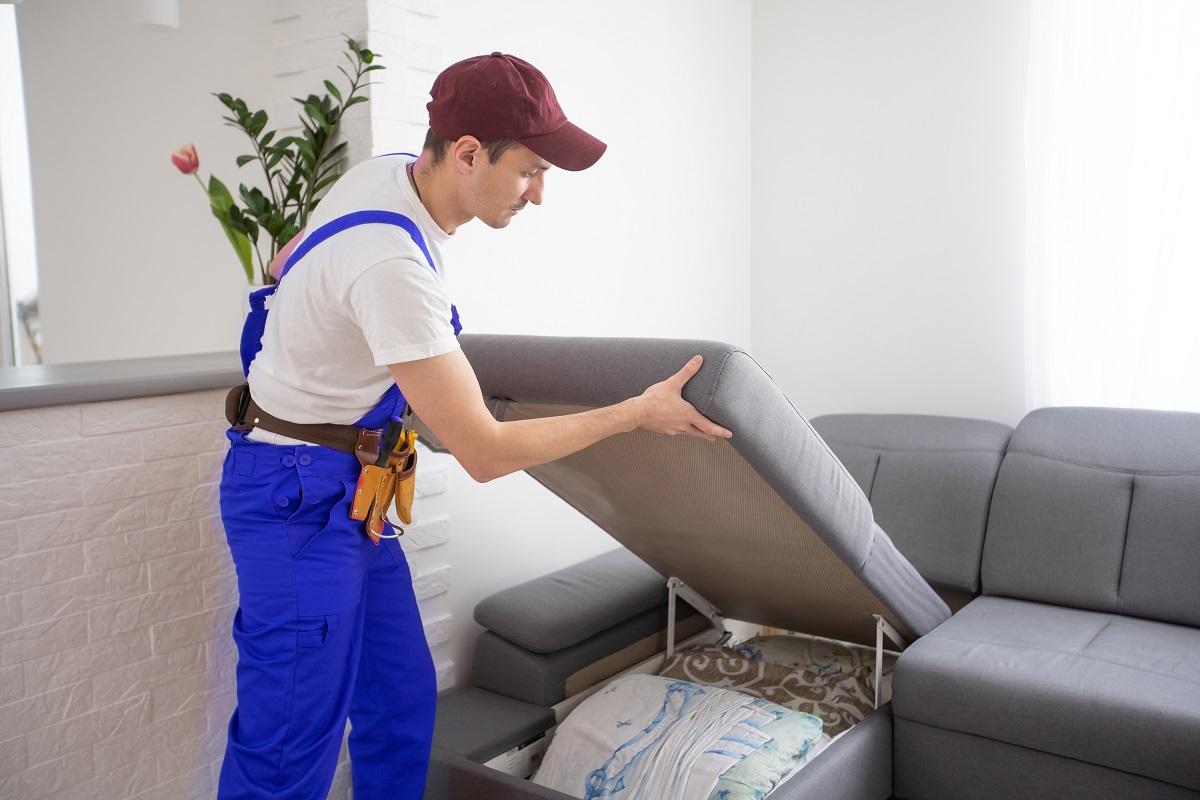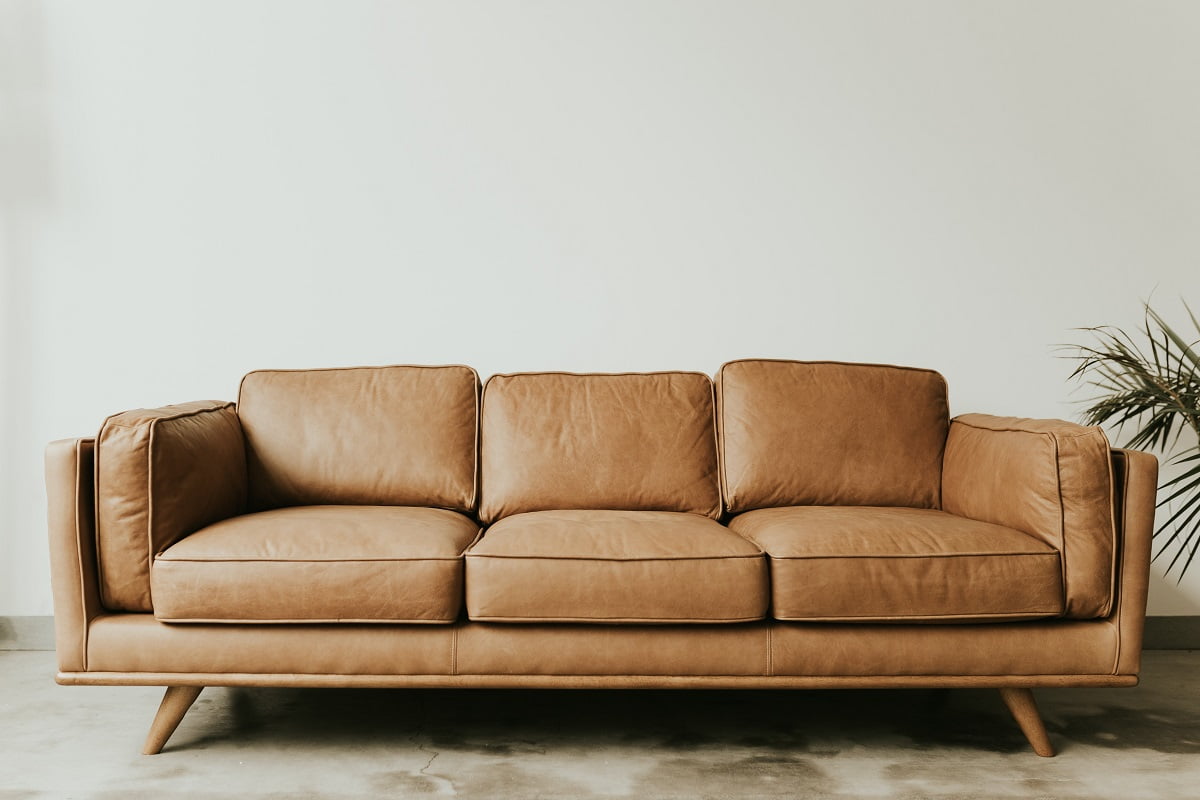Tired of your kids and pets ruining your couch?

Trust us; this problem is more common than you think. Leather couches, be it real or faux leather, are very prone to damage. Any sharp object or minor movements can easily lead to cuts and scratches on the couch. And handling is not as tough as you might think.
If you see cuts and holes developing on a leather couch, there are a number of things that you can do. Using a patch or tape is the most common solution. However, we suggest that you give leather tapes a try as well. Check out our article on top grade leather glues that are the finest leather patching tools found on the internet.
Before we get into more of these solutions, we will take you through the different types of damage that your leather couch might encounter. And in the second half of the guide, we will tell you about all the best possible solutions that you can implement to repair leather couches.
Fun Fact | Did you know super glue can be used on leather to fix it?
Remember, gluing leather is not similar to patching two pieces of paper. Thus, you have to know how to glue two pieces of leather together.
After discussing in our previous article if acrylic paint can be used on metal, today we are going to change course towards the comfiest place in the house: the couch. The place where we Netflix and chill might need refurbishment every now and then and hence let's discuss how to repair a leather couch that might need a quick revamp.
So, without further ado, let’s dive right into how to repair leather couches!
Common Types Of Leather Couch Tears

Leather couches and other leather furniture often experience different types of tears and damage, and all have a distinct repair process. A damaged leather couch will require solutions depending on what the problem is.
In this section, we will take you through the most common types of tears that might appear on your leather sofa or couch.
1. Minor Scratches/ Tears On Leather Couches
With everyday use, it is common for a leather sofa to develop minor scratches and tears. The small tears may appear in various shapes and sizes. These are primarily surface-level damages that will not require too much work to fix.
2. Cuts In Leather Furniture
Cuts on leather upholstery occur very commonly and might happen because of a range of reasons. Mostly, these cuts appear as clean incisions and have a depth of an inch or so. They might happen because of sharp objects or might even appear when you try to move a leather couch.
3. Rough Patches
When you use a leather couch for a long time, you will most likely notice worn-out edges or rough patches on it. However, when you find these worn-out edges, don’t think that you need to immediately replace the couch. There are methods that you can implement to fix the issue.
4. Holes And Punctures
For people who have pets in the house, this is a very common problem. Cats and dogs have a particular affinity for jumping on the couches, and their nails often create punctures on the surface of the couch.
Over the years, the tiny punctures tend to turn into big holes. These are mostly circular in shape and should be attended to on time. Otherwise, they will just keep increasing in size.
How To Repair Leather Couch
Now that you know about some of the most common types of tears that your leather couch might encounter, let's quickly take a look at how to fix them. There are quite a few methods that one can implement. However, today, we will take you through the most efficient and time-saving solutions that you can put to use.
1. Using Tape To Fix Leather Sofa
Would you like to find a quick solution to the tear that has appeared on your faux leather sofa? A leather tape works wonders on cuts, tears, punctures, and scratches. Be it real leather or a faux valiant, leather tapes are a fantastic way to fix a tear in no time.
But before you get started with the process, get your hands on the right tools. You won’t need too many things - a measuring tape, a clean cloth, and rubbing alcohol is all that’s required. Start by measuring the area that needs to be repaired with the tape and keep a note of the measurement.
Once you are done doing that, proceed to clean the area with rubbing alcohol using a piece of soft microfiber cloth. We strongly recommend that you use this fabric to ensure that no debris or lint is left behind after you are done cleaning the area.
Before you apply the leather tape, remain cautious and check if there is any lint or fiber left on the surface. If there’s any, the chances are that the tape won’t stick well.
After you are done cleaning, leave it to dry for a while, while you cut out the tape with the right measurements. Pro tip: Round the corners of the tape to prevent it from coming off or poking you after application.
Once the area is dry, go ahead and apply the leather tape to the damaged area. Smoothen it out till the tape adhesive sticks well to the surface of the leather couch.
2. Using Leather Glue
Leather glue mostly comes as a part of the leather repair kit that you can use to fix tears and scratches on leather couches. Adhesives are super strong and are a great tool that you can put to use when fixing tears on a leather couch.
For the leather adhesive to function, you will first need to find a patch of the same color as that of the couch. Once you find a suitable patch, you will need to put it under the cut and then apply pressure.
While you are at it, take care to not get any adhesive on yourself, as removing it will become pretty challenging. To prevent such problems, we recommend you wear plastic hand gloves or use wax paper.
Once you are done applying the glue to one side of the cut, proceed to apply it on the other side as well. And while you are at it, push the fabric as close to the other end of the cut. To get the best results, we recommend that you make sure there are no creases or wrinkles left on the patch or on your leather couch.
3. Make The Most Of Leather Fillers
Before you can proceed with using leather fillers, it is important that you first clean the surface of the couch properly. For that, combine warm water and white vinegar together into a concoction and clean the leather with it.
You can consider using a leather filler after using leather adhesive on a cut or a scratch that has developed on your couch. Once you have applied the adhesive very close to the cut and given it the proper time to dry up, apply the leather filler in thin layers.
There’s no need to be adept with the technical know-how; just follow some steps. Get a suitable applicator and put the leather filler meticulously on the scratch or cut. And make sure that your leather paint kit matches the exact color of your couch. Otherwise, the filler would stick out like a sore thumb. Once the adhesive and filler dry up, it is time for you to apply the paint.
In order to achieve the perfect look, we suggest that you not use a brush; instead, use a sponge to paint the area. Implementing this method will surely help you in repairing your couch.

How To Repair Leather Couch Final Words
With that, we have now reached the end of this guide!
We hope you had a great time reading, and now you are better equipped to repair a leather couch. You may now ask your friends to visit and spend a great evening watching TV on your recently repaired couch.
It is always a great idea to try to restore an existing couch before deciding to purchase a new one. Even if the task seems daunting in the beginning, with the right tools and a grasp of the technical know-how of repairing leather surfaces, you will be able to get the work done in no time.
Be it cracks, cuts, or scrapes, we have told you how to protect your leather couch in all situations. That said, if you liked reading this guide, do not forget to keep a watch on this space.
Until next time, fare thee well!
